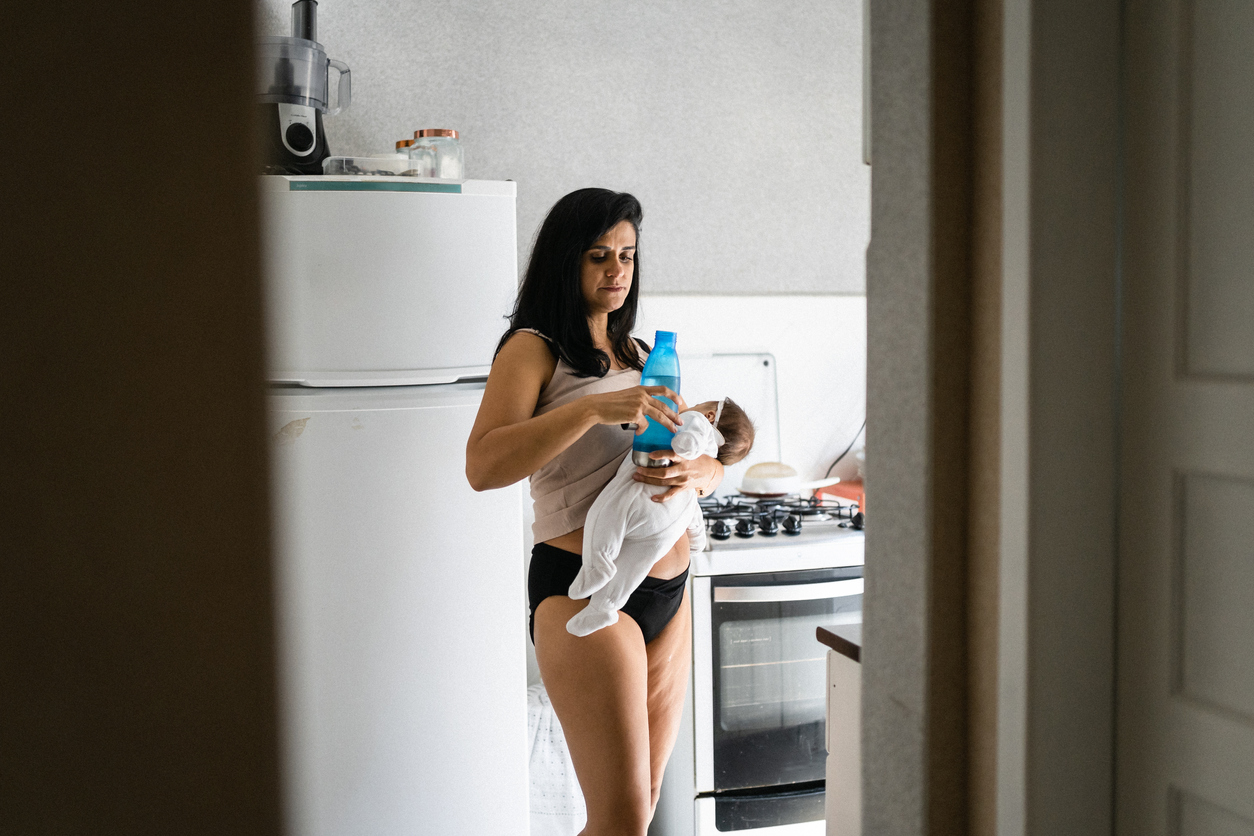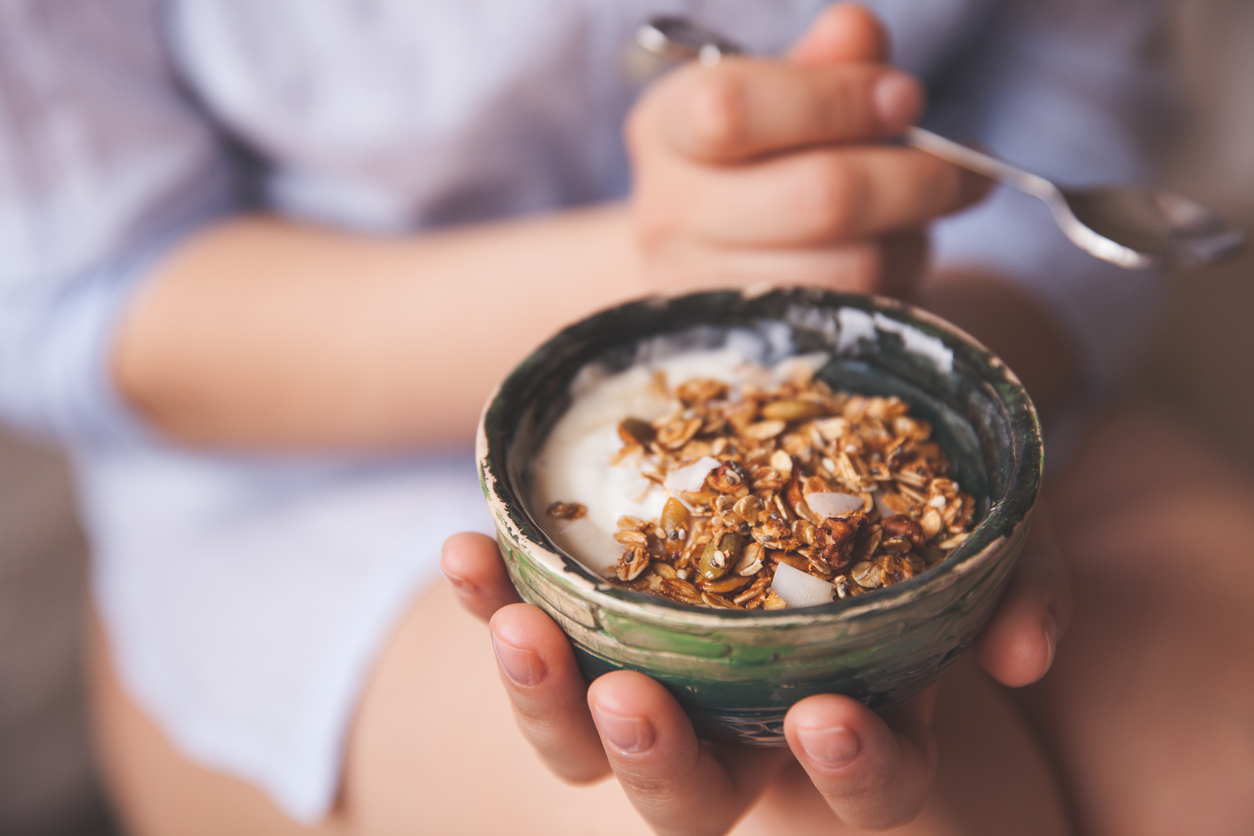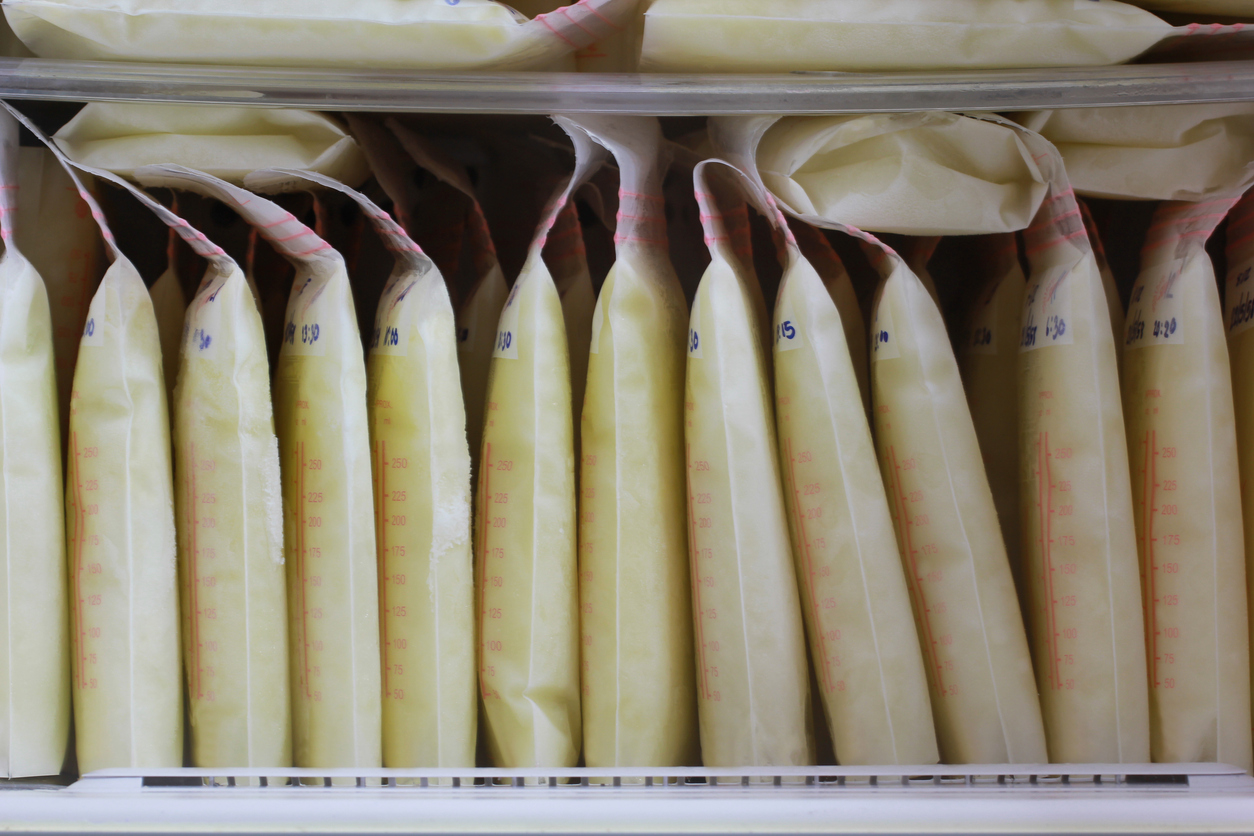
Breastfeeding is rife with amazing things, including bonding with baby, feeding the little one a nutrient rich diet, and letting the body nurture a literal human being. But the topic is also rife with judgment and hardship. Not everyone can or wants to breastfeed, and even when new mamas do, it's not always easy.
The American Academy of Pediatrics just updated breastfeeding recommendations for up to six months of exclusive breastfeeding and then a two-year transition to solid foods, which reignited the conversation and likely has new moms who do want to breastfeeding wondering how they can make the process as seamless as possible.
That's where Melissa Kotlen, an international board certified lactation consultant and a registered lactation consultant at Boram Postnatal Retreat, comes in. CafeMom asked her some things that mamas looking to breastfeed can do, and she had great pointers from diet to pumping.
Even though she supports breastfeeding and the American Academy of Pediatrics recommendations, she says that no matter what, moms need to do what's best for them.
"I always say to my prenatal moms, I would rather have a mom who tells me straight-up that she doesn't want to breastfeed because she will be happier formula feeding than a mom who is breastfeeding and is miserable and falling into a depression because she thinks she 'has' to do it," she tells us.
But for those looking to give breastfeeding a try, check out her tips.
Practice skin-to-skin contact from the start.

Skin-to-skin contact isn't just to help bond parent and baby: It can also help with breastfeeding. "The most important transition comes only minutes after the transition from intrauterine to extrauterine life," Kotlen tells us.
"Placing the baby skin-to-skin immediately after delivery (if possible) is a key factor in starting off on the right foot with breastfeeding. (If you have a C-section, we can do this as soon as you get into the recovery room – many hospitals do not allow the baby to be unwrapped in the OR as it is cold and skin-to-skin is difficult with mom on the table.)"
Take advantage of the free stress relief.

But wait! There's more. There's another benefit of skin-to-skin contact when it comes to breastfeeding — stress relief. We're all about that because breastfeeding can be stressful and frustrating when starting out. "Skin-to-skin releases hormones that reduced stress, which help to make the breastfeeding experience seamless," Kolten says.
Have experts in your corner.

"It's all about support!" Kolten says. "Be prepared before you give birth with the contact information of a lactation consultant and chat with her about how she works and how you can get in touch with her after you deliver. Starting off on the right foot with solid and consistent support will make the entire difference in the duration of your journey."
Frequently put the baby to the breast (or pump).

"The most important way to boost lactation is to either put the baby to the breast frequently or to pump if not breastfeeding, every two to three hours during the day (it's OK to take one four- to five-hour stretch in a 24-hour period). It's an issue of supply and demand – the more you stimulate, the more you will make," Kolten explains.
Things don't always go the way we planned, however.
Make sure you're drinking enough water if your supply is low.

Experts and breastfeeding moms alike know that water is going to be your best friend during this process, so definitely have water bottles handy. You'll need "at least half of your pre-pregnancy body weight in ounces per day of clear fluids. Dehydration can play a major role in low supply, so staying hydrated is critical," Kolten says.
Eat a well-balanced, nutrient-dense diet.

"You need at least 500 extra calories per day to maintain a strong supply, so make sure you're packing that into your diet," Kolten shares.
A good source of that energy should come from breakfast. "If you like oatmeal loaded with the works — flaxseeds, nuts, berries, chocolate chips — all the better!" she adds.
Drink a specially designed lactation tea.

Tea has been a naturally medicinal source in many cultures for all types of things from hormonal imbalances to brain function, and the same goes for breastfeeding. Kolten suggests trying lactation teas or supplements (if approved by a doctor) "such as Mother's Milk Tea or Tea-Tas, which will promote healthy supply."
Lactation cookies are a thing too!
Educate your loved ones.

Education, education, and more education is one of the best ways that loved ones of breastfeeding mamas can support them and make the effort that much easier. It can feel isolating if breastfeeding mamas don't feel like they're doing what they "should" do.
"The more your loved ones understand about the process, the more supportive they are able to be," she says. That can include being understanding of the fact that fed is best, but also that breastfeeding doesn't have to stop right away.
If you're the loved one, reserve judgment.

"Secondly, reserve judgment. All too often, I see too many opinions of what family members think mom should be doing and 'advising,' rather than asking her how they can best support her," Kolten tells us.
"On the simplest level, if mom needs rest, the family can take the baby to another room or out for a walk while mom takes a nap. For more difficult issues, offer to find a lactation consultant if she hasn't already been in touch with one. Listening carefully to her needs will guide the entire family unit."
Not working out but still want human milk? Other options exist.

Although breastfeeding is the recommendation, it's not the rule, especially if the process is not working for both mamas and their babies. "Donor breast milk can be obtained through milk banks," says Kolten.
To find a comprehensive list of milk banks, go to hmbana.org — the Human Milk Banking Association of America, she suggested. "The process to donate is rigorous, so moms know they are getting the ultimate in safe milk."
(She does have a disclaimer, though: "I caution everyone, however, to NOT purchase it elsewhere, particularly on sites like eBay or online groups where the donors are unknown.")
Support or seek out workplaces that have lactation rooms.

"Gone are the days of moms having to pump on a toilet seat in a stall," Kolten says. "Moms are protected by laws stating that they must be offered reasonable accommodations to pump. While this may not be 'new news' (this has been in effect since 2010), what IS new is the push to create thoughtful and elaborate lactation rooms in the workplace."
Moms can take advantage of spaces should their companies provide them, and if not, don't be afraid to advocate to get one.
Build a milk stash for after maternity leave.

Another thing new mamas can do to help make the transition to work or to full-time parenting with other kids while breastfeeding is to create milk stashes. Try to store the milk from pumping, either for times when breasfeeding isn't possible or for dad or a caretaker when mama just needs a break or to be elsewhere.



